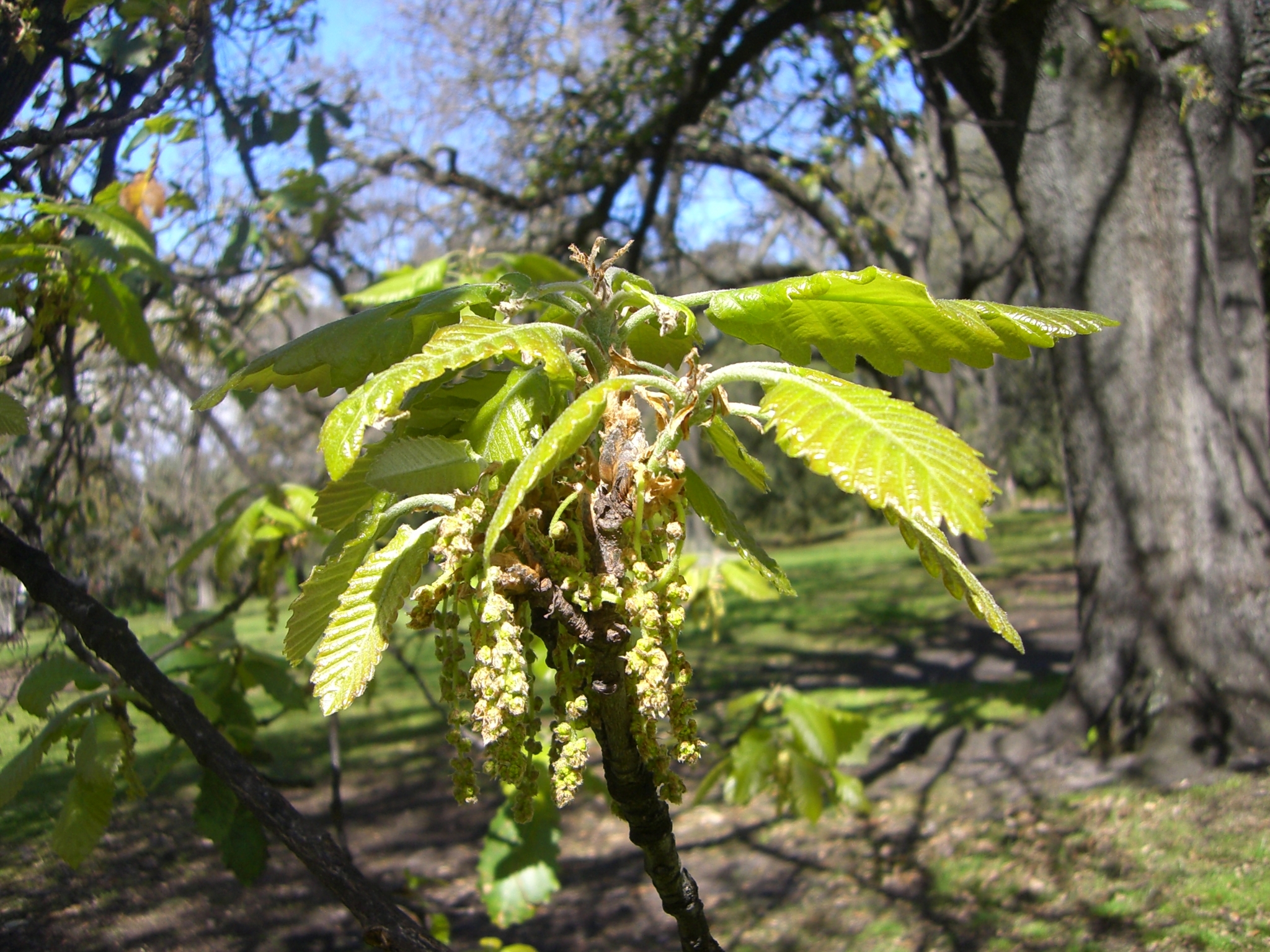
Large, broad-crowned, semi-deciduous tree (naturally deciduous but often retaining some leaves) to 20 m or more tall. Bark dark, fissured. Branches large and widespreading. Leaves partially deciduous, persisting in warmer areas, oblong to obcordate, mostly 10-22 cm long, 5-12 cm wide, base abruptly rounded to almost heart-shaped, occasionally tapered, margins with 7-10(-13) shallow lobes or blunt teeth, dark green above, pale waxy blue below where there is yellowish hair, particulartly at the base near the stalk, that is soon shed and rubs off easily (especially when the leaf is young) to form fluffy yellow balls; the pale veins are prominent; autumn colouring is yellowish brown. Leaf stalk 1-3.5 cm long, often dark pink at first. Acorns to 2.5 cm long in clusters of 1-3 on a short stalk, half enclosed in the cup and often several clusters packed together; scales downy, flattened, Feb-Mar. [Q. mirbeckii Durieu]
Portugal, S Spain, N Africa
In spite of the specific epithet, this species does not occur naturally in the Canary Islands. Bean (1976) states that this species 'hybridises so readily with the English Oak that its seedlings are rarely 'true', a situation equally applicable in Australia where it displays great variation in leaf shape and size, often closely approaching Q. robur. The hybrids have the fewer lobes, longer acorn stalks and generally the 'eared' leaf bases of Q. robur but the flocculose hair and bluish undersurface of Q. canariensis. Hybridisation and the great variability in leaf shape and lobing have suggested a range of similar species. The following should be checked; Q. mongolica Turcz. which has leaf stalks less than 1 cm long (NSW, Blue Mountains Botanic Garden Mount Tomah planted 1986); Q. prinus L. has pointed leaves with grey felty lower surface (Blue Mountains Botanic Garden Mount Tomah planted 1950s). Q. faginea Lam. (Dunrossil Drive, Canberra) has similar shaped leaves that are smaller with a white-hairy undersurface that is not flocculose and lobes that are more tooth-like.
Leaf shape characteristic, undersurface bluish; yellowish or orange hair that gathers into fluffy balls (flocculose) at the base near the stalk on the lower surface, especially when young and rubbed with a finger.
SA: Adelaide (Rose Park, Alexander Ave, street trees); Stirling (on footpath outside 17 Laurel Avenue, 37 m tall and spread of 25 m in 1994 ). ACT: Canberra (Northbourne Ave, S end); Telopea Park school grounds; Barton (New South Wales Crt). NSW: Sydney (Royal Botanic Garden Sydney). VIC: Ballarat (Sturt St opposite Post Office); Canterbury (Canterbury Gardens); Belgrave ('Glen Harrow'); Dandenongs ('Kenloch', 33 m tall in 1990); Hawthorn (Central Gardens); Korumburra (Public Park); Leongatha (Mossvale Park, several also in Horticultural Park); Lima (State School 28 m in 1994); Malvern (Hedgeley Dene Gardens); Melbourne (Royal Botanic Gardens Victoria (Melbourne Gardens), tree outside the Director's Residence was 3 years old when planted by W. R. Guilfoyle in 1873 and 13 m tall in 1990, several other large trees on Hopetoun Lawn planted by Lady Loch in 1889, 21 m tall in 1983); Narre Warren (61 trees on Princes Highway planted 1890); Albert Park (St Vincent Gardens); Surrey Hills (Albany Crt, avenue of old trees); Woodend (Avenue of Honour, also hybrids and Q. robur planted c. 1920).
Source: (1997). Fagaceae. In: . Horticultural Flora of South-eastern Australia. Volume 2. Flowering plants. Dicotyledons. Part 1. The identification of garden and cultivated plants. University of New South Wales Press.
